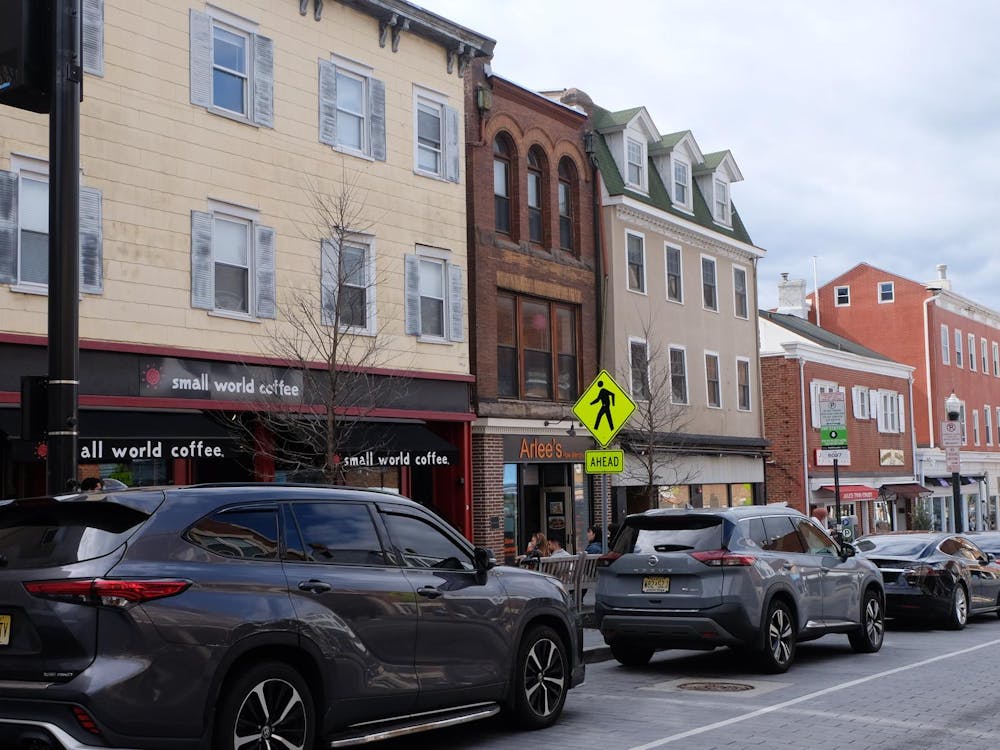On Jan. 15, New York’s moratorium on evictions officially expired, ending a pandemic-era policy that allowed tenants to continue living in their leased residences even when they could not afford to pay rent.
Despite the end of these protections, the number of evictions in the state remained relatively low, according to findings from The Eviction Lab, a University-based group of researchers. In fact, 231 eviction filings were submitted in the state in the week following the moratorium’s expiration — one-tenth the number submitted before the moratorium began in March 2020. Its findings were cited by multiple news sources, including the Wall Street Journal and Reuters.
Throughout the pandemic, researchers at Princeton’s Eviction Lab have been poring through formal eviction court records and compiling the data to analyze eviction trends in states and cities across the nation.
New York’s eviction moratorium began on March 7, 2020 and ended Jan. 15, 2022. Now that the moratorium has officially ended, the team of researchers at The Eviction Lab has been providing updates and in-depth analyses of eviction filing trends.
Founded in 2017 by sociology professor Matthew Desmond, The Eviction Lab examines the causes, implications, and prevalence of evictions in the United States. Since 2017, the lab’s findings and reports have been widely cited, including by the White House, to inform policy solutions geared toward mitigating evictions and their impacts.
Desmond’s book, “Evicted: Poverty and Profit in the American City,” won the 2017 Pulitzer Prize in General Nonfiction.
So far, the lab has yielded overwhelming evidence demonstrating that evictions not only compound poverty but exacerbate a range of measures of well-being, from educational inequities to health disparities. During the COVID-19 pandemic, The Eviction Lab has researched the complicated dynamics of housing insecurity, poverty, and public health.
When the COVID-19 pandemic struck in early 2020 and unemployment rates surged, the Trump Administration approved a federal eviction moratorium in March under the Coronavirus Aid, Relief, and Economic Security (CARES) Act. This moratorium supplied relief for vulnerable tenants who faced uncertain employment amid the pandemic, guaranteeing them residential security. It ended a few months later in July 2020. The end of the CARES Act moratorium sent shockwaves across the country, and many experts believed that the nation would experience one of the most severe eviction crises in its history.

Shortly thereafter, the Center for Disease Control and Prevention (CDC) announced its own national eviction moratorium in Sep. 2020. This policy was repeatedly extended and endured for a total of eleven months before it expired on Aug. 26, 2021. The Eviction Lab analyzed eviction court records during this time and outlined the striking findings in a preliminary report.
The report indicates that the CDC’s eviction moratorium not only reduced the number of evictions by half of the total number expected to occur during a typical year — staving off nearly 1.55 million evictions — but also contributed to mitigating the spread of coronavirus during the delta variant surge.
In communities where state eviction moratoria were lifted after the end of the Trump administration’s federal moratorium, COVID-19 case spread also increased, according to a study cited by The Eviction Lab. Furthermore, the lab’s own analyses found that communities with higher eviction filing rates also had the lowest levels of COVID-19 vaccination.
Matt Mleczko, a graduate student researcher at The Eviction Lab, emphasized that eviction moratoria and rental assistance programs have been pivotal in reducing the number of eviction filings and keeping people housed during the pandemic.

“The eviction moratoria and rental assistance programs enacted throughout the pandemic represent arguably the most significant federal housing interventions since the days of rent caps during WWII,” Mleczko wrote in an email to the ‘Prince.’
Joe Fish, a research specialist at The Eviction Lab, noted the magnitude of the housing crisis and its detrimental impacts on public health.
“Along with being a housing crisis, eviction is also a public health crisis. In the nine months between March and September of 2020 it was estimated that the expiration of local eviction moratoria led to over 10,000 excess deaths,” Fish wrote in an email to the ‘Prince.’
The assessment of the CDC’s 11-month eviction moratorium was informed by data that researchers collected and subsequently analyzed using various applications. On its website, The Eviction Lab takes tens of millions of court records and presents them in accessible, visualizable datasets.
By harnessing the Eviction Tracking System (ETS), a database that exhibits weekly eviction filings from six states and 31 cities and monitors “the impact of the COVID-19 pandemic and associated policies,” the group discovered that evictions remained significantly below historical averages following the termination of the federal moratorium.
Fish offered several explanations for the case of New York, where eviction numbers were lower than expected after the end to state moratoria.
“I think this points to how successful a policy like giving tenants money directly can be. The Emergency Rental Assistance has allocated over 46 billion dollars in rental assistance, which we think is one of the main reasons why filings have remained low,” Fish wrote. “Our concern would be that this money has dried up in many places, which could mean that evictions will go back to or above their historical averages.”
As spread of the omicron variant slows, delaying and preventing evictions might strike some as a trivial issue. Mleczko thinks otherwise, arguing that returning to the status quo of eviction numbers would expose the systemic and structural issues that led to a fraught housing market in the first place.
“Before the pandemic, we could expect to record 3.7 million eviction filings in a normal year, which amounts to 300,000 eviction filings per month or [seven] eviction filings every minute. Compare that to the 1.2 million completed foreclosures in 2010 at the height of the foreclosure crisis,” Mleczko wrote. “Moreover, there are glaring racial and gender disparities when it comes to eviction. Black neighborhoods generally record the highest eviction rates and Black women face the highest eviction risk out of any demographic group, experiencing roughly double the rate of eviction filings as compared to white renters.”
“This is a normal that is absolutely not worth returning to,” Mleczko continued.
Going forward, The Eviction Lab will continue to amass up-to-date court eviction filings and apply its tools to discern trends and patterns in evictions across the nation. The lab strives to produce data that can contribute to informing policy decisions at local, state, and federal levels.
Potential policy interventions against housing insecurity might include right-to-counsel programs that guarantee tenants access to legal counsel and an increase in the filing fees required to submit eviction filings.
Despite the significance of such measures in reducing the frequency and severity of evictions, Mleczko wrote that The Eviction Lab, above all, seeks to establish long-term solutions that address the root causes of evictions.
“As Dr. Desmond has argued in his work, a universal Housing Choice Voucher (HCV) program would almost certainly eliminate a large portion of evictions and homelessness,” Mleczko wrote. “But there are many other reforms worth considering, such as [the] source of income discrimination laws (which essentially forbid landlords from refusing to rent to those with vouchers), recommitting far more public dollars towards constructing affordable and mixed-income housing, eliminating exclusionary zoning, and so on.”
“If we have learned anything from this pandemic,” he wrote, “it should be a realization of how fragile our housing market and social safety net has become. The sense of urgency captured by many eviction moratoria and rental assistance efforts likely forestalled catastrophe and saved lives.”
Amy Ciceu is a senior writer who often covers research and COVID-19-related developments. She also serves as a Newsletter Editor. She can be reached at aciceu@princeton.edu.








